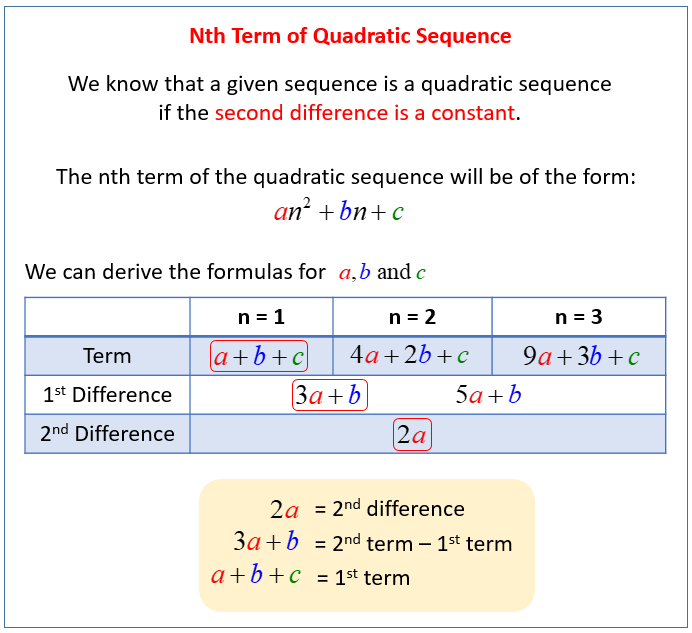

I couldn’t find decent complex examples on either of my favourite GCSE maths revision sites ( Maths Genie and BBC Bitesize), and when you’re doing the more complex examples, a step-by-step guide is really useful.
#Examples of quadratic sequences how to#
I’m an ex high school maths teacher, but I had forgotten how to do this. Now we use our algebra skills to solve for "x".I’m currently helping my 15-yr-old son revise for his maths GCSE, and one topic is “finding the nth term of a quadratic sequence”. Total time = time upstream + time downstream = 3 hours (to travel 8 km at 4 km/h takes 8/4 = 2 hours, right?) We can turn those speeds into times using:

There are two speeds to think about: the speed the boat makes in the water, and the speed relative to the land: What is the boat's speed and how long was the upstream journey? The negative value of x make no sense, so the answer is:Įxample: River Cruise A 3 hour river cruise goes 15 km upstream and then back again. The desired area of 28 is shown as a horizontal line. Let us solve this one by Completing the Square. How many you sell depends on price, so use "P" for Price as the variable what is the best price? And how many should you make?

The factors of −15 are: −15, −5, −3, −1, 1, 3, 5, 15īy trying a few combinations we find that −15 and 1 work Multiply to give a×c, and add to give b" method in Factoring Quadratics: There are many ways to solve it, here we will factor it using the "Find two numbers that It looks even better when we multiply all terms by −1: (Note for the enthusiastic: the -5t 2 is simplified from -(½)at 2 with a=9.8 m/s 2)Īdd them up and the height h at any time t is:Īnd the ball will hit the ground when the height is zero:

Gravity pulls it down, changing its position by about 5 m per second squared: It travels upwards at 14 meters per second (14 m/s): (Note: t is time in seconds) The height starts at 3 m: Ignoring air resistance, we can work out its height by adding up these three things:


 0 kommentar(er)
0 kommentar(er)
